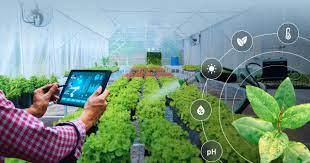Introduction
Smart agriculture, an innovative approach fueled by technological advancements, is revolutionizing traditional farming practices. This article delves into the concept of smart agriculture, exploring its definition, historical context, and the transformative impact it has on the agricultural landscape.
Defining Smart Agriculture
Smart agriculture, often referred to as precision farming or agtech, involves the integration of technology into farming practices to enhance efficiency, sustainability, and productivity. The aim is to make data-driven decisions and optimize various aspects of crop cultivation and livestock management.
Historical Context and Evolution
The roots of smart agriculture can be traced back to the introduction of machinery in the agricultural sector during the Industrial Revolution. However, the evolution accelerated with the advent of digital technologies. From GPS-guided tractors to sensor-equipped drones, the integration of smart technologies has reshaped farming over the years.
Key Components of Smart Agriculture
Smart agriculture encompasses a range of technologies and tools. This section explores key components such as:
- Precision Farming: Using GPS and IoT devices to optimize planting, harvesting, and irrigation.
- Satellite Imagery: Providing real-time insights into crop health and field conditions.
- IoT Sensors: Monitoring soil moisture, temperature, and other crucial parameters.
- Automated Machinery: Employing robotics for tasks like seeding, weeding, and harvesting.
- Data Analytics: Analyzing large datasets to make informed decisions.
- Benefits of Smart Agriculture
The adoption of smart agriculture brings forth numerous benefits
- Increased Efficiency: Precision farming techniques optimize resource usage, leading to higher yields with fewer inputs.
- Sustainability: Smart agriculture promotes sustainable practices by reducing water and chemical usage.
- Cost Savings: By automating tasks and optimizing processes, farmers can cut costs and enhance profitability.
- Data-Driven Decision-Making: Access to real-time data enables farmers to make informed decisions, improving overall farm management.
Challenges and Considerations
While smart agriculture holds immense potential, it comes with challenges:
- Cost of Implementation: The initial investment in technology can be a barrier for small-scale farmers.
- Data Security Concerns: The collection and storage of sensitive farm data raise concerns about privacy and security.
- Technological Literacy: Farmers need adequate training to effectively use and benefit from smart agricultural technologies.
- Real-world Applications
Smart agriculture finds applications across various domains
- Precision Livestock Farming: Monitoring the health and behavior of livestock using sensors and data analytics.
- Crop Monitoring: Utilizing drones and satellite imagery for real-time crop health assessments.
- Automated Irrigation Systems: Optimizing water usage through IoT-controlled irrigation systems.
- Predictive Analytics: Using machine learning algorithms to predict crop diseases and pest outbreaks.
- Future Trends in Smart Agriculture
Anticipated trends in smart agriculture include
- 5G Technology Integration: Enabling faster and more reliable connectivity for IoT devices.
- Artificial Intelligence: Enhancing decision-making through advanced analytics and predictive modeling.
- Blockchain in Supply Chains: Ensuring transparency and traceability in agricultural supply chains.
Conclusion
Smart agriculture stands at the forefront of transforming traditional farming practices into data-driven, efficient, and sustainable systems. As technology continues to advance, the integration of smart agriculture into global farming practices will play a pivotal role in addressing the challenges of feeding a growing population while promoting environmental stewardship. This revolution in farming is not just about embracing technology; it’s about securing the future of agriculture and ensuring food security for generations to come.

